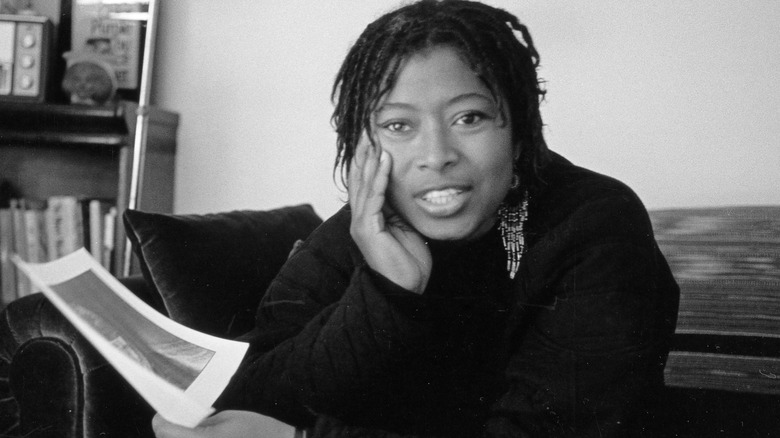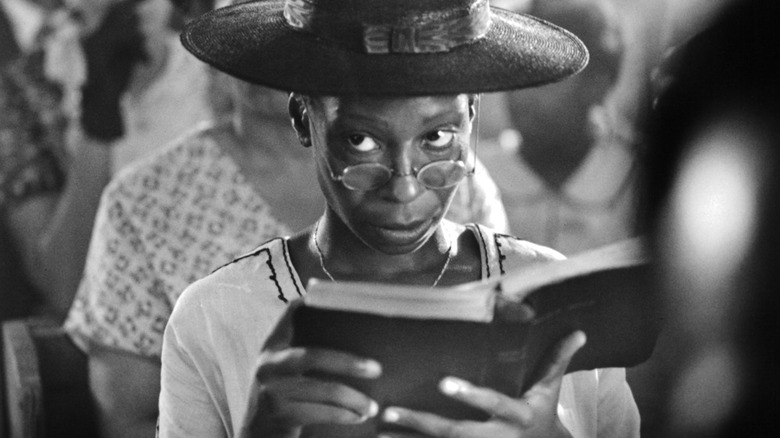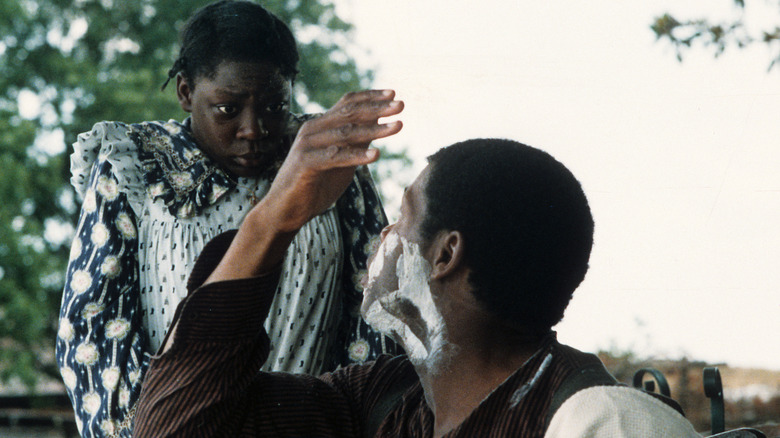The Reason The Color Purple Often Appears On Banned Books Lists
It's a strange dichotomy when a book is simultaneously one of the most popular and the most banned in history. But such is the reputation of Alice Walker's "The Color Purple." The story of Celie and her family made Walker the first Black woman to win the Pulitzer Prize for fiction in 1983, and the BBC named the work one of the 100 most inspiring novels. But per the American Library Association, it is also the 50th most banned book in the United States based on the years 2010 to 2019. In the previous decade, it placed even higher.
According to the Banned Books Project of Carnegie Mellon University, parents have been the primary culprits behind bans on "The Color Purple," having successfully pulled it from many school libraries since 1984. The Politics and Prose Bookstore marks Oakland, California as home of the earliest challenge to the book's presence in schools. It was being read in an honors English class at a local high school, but objections were raised about the story's "troubling ideas about race relations, man's relationship to God, African history, and human sexuality," as well as "sexual and social explicitness."
The campaign against "The Color Purple" was led by school board member Darlene Lawson after a parent's complaint, according to UPI. Lawson was no fan of the book herself, putting her at odds with some of her fellow board members. But she did successfully secure a temporary ban in Oakland schools.
The strong sexual content of The Color Purple upsets many readers
The complaints raised against "The Color Purple" in Oakland in 1984 have set the timbre of complaints ever since. Per the American Library Association, Oakland's ban was followed by one in Hayward, California the following year on account of the novel's "explicit sex scenes." Schools across the Midwest and the South followed suit throughout the 1980s, always pointing to the book's graphic sexual material. One Pennsylvania school district went so far as to call it "smut" when instituting a ban in 1992.
The reasons for banning or attempting to ban the work's depiction of sex have varied by case. More conservative school districts, like Morganton, North Carolina, were pressured by parents who objected to the book's depiction of homosexual acts. For others, the novel's scenes of rape and incest were too unsettling to allow in a school setting. School board member Bernard King of Jackson County, West Virginia, worried that exposure to such material could encourage young readers to imitate the sex acts in the book (per The Washington Post).
If it's not sex, it's the book's violence that upsets people
Violence, along with sex, has motivated parents to try and ban "The Color Purple" from schools. Besides its depictions of sexual violence, the novel includes characters being beaten and getting into fights. Black men are the perpetrators of many of these acts of brutality, and some school districts have cited such a portrayal of Black men as a reason to ban the book — or at least offer alternative reading assignments in the case of one 1995 case in Junction City, Oregon (per the American Library Association). The 1985 film adaptation, directed by Steven Spielberg, brought the book's scenes of violence into a visual medium and fired additional public debate about the story's depiction of Black men.
Separate from how it portrays men, the violence itself was the given reason that Texas state prisons banned "The Color Purple" in 2017, according to the Banned Books Project. The decision was part of a larger prohibition that included some 10,000 books and was heavily criticized. Of particular note were some of the titles that were allowed instead — "Mein Kampf," for instance. Human Rights Defense Center director Paul Wright accused such bans of showing a leniency bias towards white supremacy (per The New York Times).


